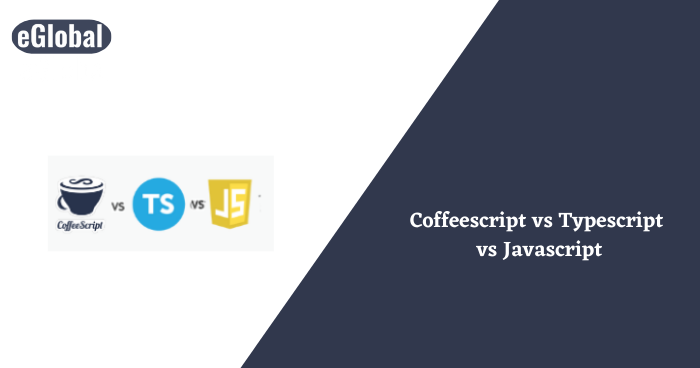

The object scripting language JavaScript is one of the most extensively used programming languages. According to a poll, JavaScript surpassed Python as the most popular programming language in 2018. Both types of scripting languages, TypeScript and Coffeescript, are related to the dynamic JavaScript programming language and have been growing exponential popularity in the developing world. We shall analyze and compare these languages and what lies in between them in this section.
JavaScript is a dynamic, interpreted programming language at the advanced level. Besides HTML and CSS, it is a vital component of the World Wide Web. All modern web browsers are compatible with this technology.
JavaScript is a prototype-based language with first-class functions, enabling it to be used for various purposes and to support both functional and object-oriented programming methods. It contains an API for manipulating arrays, expressions, and text but lacks I/O capabilities like storage, media, networking, and graphics. It must depend on the host environment; however, frameworks like Node.js may use all JavaScript’s advantages.
JavaScript utilizes its functionalities in non-web applications, such as desktop widgets, site-specific browsers, and PDF documents. Additionally, it is used extensively in game creation, desktop/mobile application development, and server-side network programming.
Coffeescript is a prominent example of one of these languages. Its syntax is comparable to JavaScript but has several modifications to produce cleaner, more succinct code. It’s pretty simple to read and grows easier to understand with sufficient effort.
Coffeescript is a squeaky-clean tiny language type that compiles to JavaScript flawlessly. Underneath that pathetic complicated structure made of ‘braces and semicolons,’ JavaScript has always had a traditional object model at its core. Coffeescript is an effort to simplify exposing the good and bad portions of JavaScript.
Apart from syntax, Coffeescript has several extra features and improvisations. Due to the enhancements to variable scoping, there is no need to declare variables; use desired variables and define them in the output.
Typescript is a more recent rival, created by Microsoft and designed to be treated as a first-class citizen in Visual Studio, complete with Intelligence and on-the-fly compiler errors. In contrast to CoffeeScript, TypeScript is a comprehensive superset of JavaScript. All JavaScript code is 100% TypeScript compliant.
TypeScript includes several features that aid in generating better JavaScript, such as a natural syntax for class definitions. TypeScript has one significant advantage: it optionally supports static type checking, which significantly simplifies interacting with other JavaScript libraries, either without type checking or through a typed interface definition that you provide.
TypeScript typically supports all definition files containing method information for existing JavaScript libraries, much as C/C++ header files do for earlier object files. This allows other applications to access all the values described in the files as statically typed TypeScript entities.
TypeScript is unmistakably a precursor of what JavaScript may become in a few years. Including classes, modules, a type system, and an IDE that fully exploits these capabilities makes it a desirable alternative to simple JavaScript.
In general, TypeScript is more similar to JavaScript than Coffeescript, making it simpler to learn, and the produced output is more similar to the input in this scenario.
Hope this Article is beneficial for you. hire Indian developers for your future projects! contact us for more details…….

© 2017 All rights reserved.